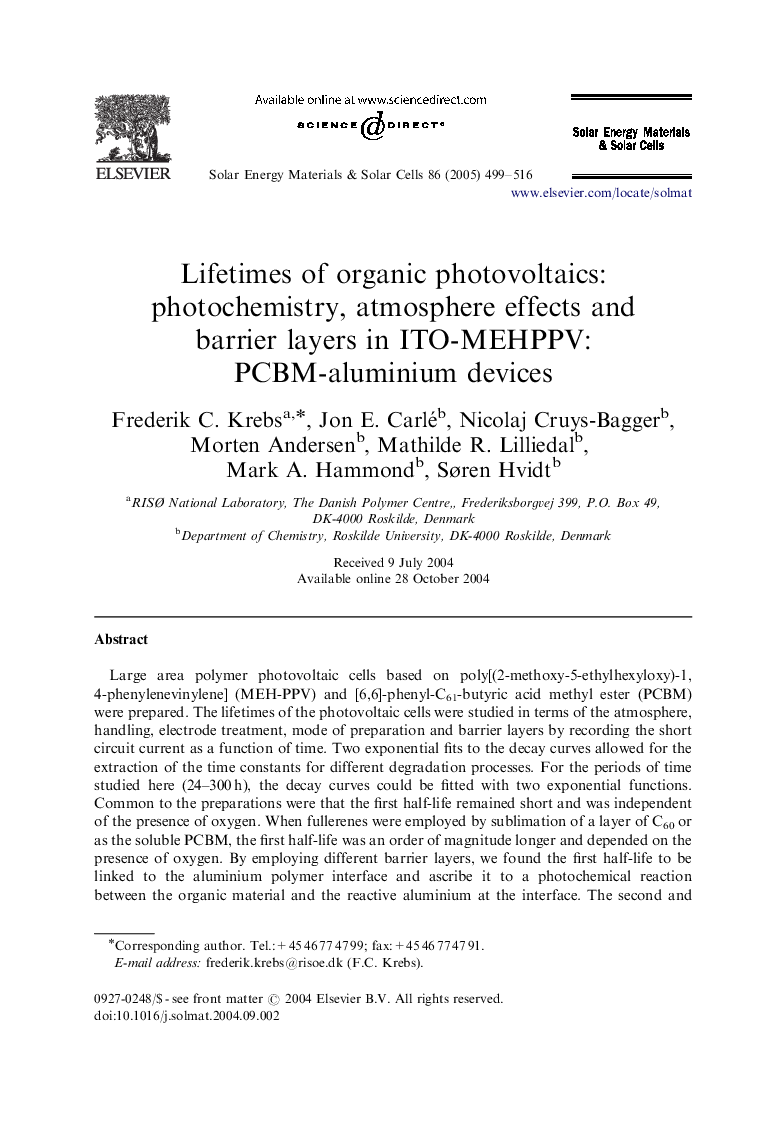| Article ID | Journal | Published Year | Pages | File Type |
|---|---|---|---|---|
| 10248962 | Solar Energy Materials and Solar Cells | 2005 | 18 Pages |
Abstract
Large area polymer photovoltaic cells based on poly[(2-methoxy-5-ethylhexyloxy)-1,4-phenylenevinylene] (MEH-PPV) and [6,6]-phenyl-C61-butyric acid methyl ester (PCBM) were prepared. The lifetimes of the photovoltaic cells were studied in terms of the atmosphere, handling, electrode treatment, mode of preparation and barrier layers by recording the short circuit current as a function of time. Two exponential fits to the decay curves allowed for the extraction of the time constants for different degradation processes. For the periods of time studied here (24-300Â h), the decay curves could be fitted with two exponential functions. Common to the preparations were that the first half-life remained short and was independent of the presence of oxygen. When fullerenes were employed by sublimation of a layer of C60 or as the soluble PCBM, the first half-life was an order of magnitude longer and depended on the presence of oxygen. By employing different barrier layers, we found the first half-life to be linked to the aluminium polymer interface and ascribe it to a photochemical reaction between the organic material and the reactive aluminium at the interface. The second and longer half-life was found to depend on the presence of oxygen. We also discuss our findings of the short lifetimes for organic photovoltaics under AM1.5 illumination in the context of future applications.
Related Topics
Physical Sciences and Engineering
Chemical Engineering
Catalysis
Authors
Frederik C. Krebs, Jon E. Carlé, Nicolaj Cruys-Bagger, Morten Andersen, Mathilde R. Lilliedal, Mark A. Hammond, Søren Hvidt,
